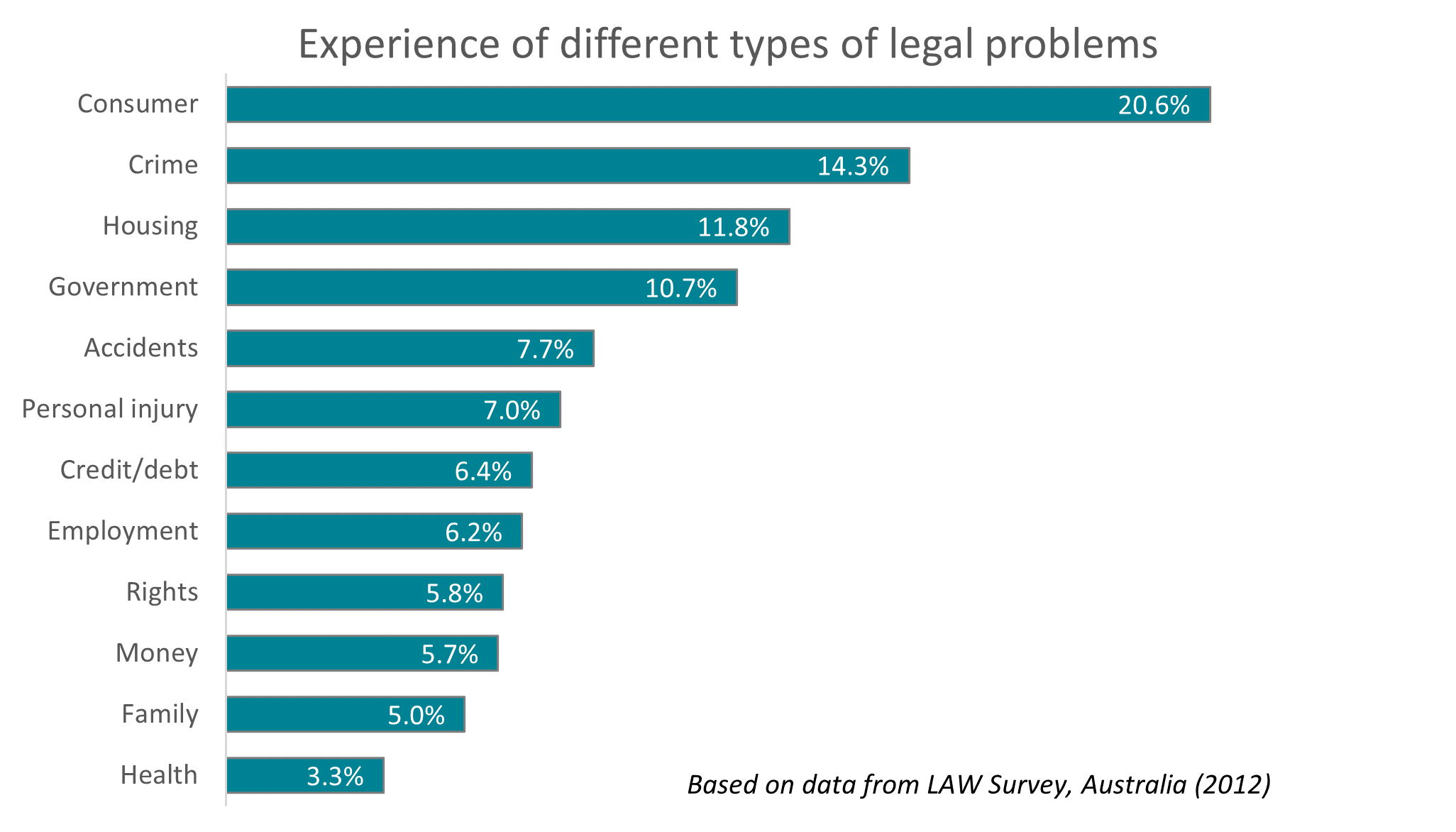Who is most vulnerable to experiencing legal problems, and who is most likely to need legal or justice system assistance to successfully resolve their problems?

Legal need arises when a person has a legal issue, problem, or dispute for which they would in some way benefit from a form of legal assistance or justice system intervention, whether or not they are aware of this.
Legal assistance may range from access to self-help materials to legal representation by a lawyer. The justice system supports access to justice through the provision of dispute resolution services, including the courts, tribunals and a range of mediation and conciliation services.
Some types of legal need bring people into contact with the justice system, such as being prosecuted for a crime, filing for divorce, or being pursued by a landlord for unpaid rent. However,
Even when people are aware they would benefit from legal assistance, they may face personal or financial barriers to seeking help and/or a lack of providers whose services they qualify for or who have the capacity to respond to their need.
Legal need therefore comprises:
People in the formal justice system and/or receiving legal assistance services, represent only a proportion of the legal need of a community. Other sources of information are required to identify the extent and nature of legal need, and who is most likely to experience it and require legal assistance if they do.
Because not everyone who experiences a legal problem has contact with the justice system or a lawyer, general population legal need surveys provide the most complete picture of legal need. See our short summary Introduction to legal need surveys and browse other resources in relation to legal needs surveys.
This video describes key points to consider when estimating legal need in your jurisdiction or region.
Experiencing a legal problem is very common. About half of Australian adults report experiencing at least one legal problem in the previous year.

About a quarter of Australians are estimated to experience two or more legal problems from different areas of law each year.

Research has demonstrated the detrimental and compounding impact of legal problems, particularly for the most vulnerable, so identifying those people with unmet legal need is not only an access to justice priority but should also reduce disadvantage and bring economic benefits for society.
A cost-effective justice system response is informed by:
Some types of legal problems are more commonly experienced than others. Legal needs surveys only measure the types of legal problems they ask about, but those that have covered the broadest range of problems suggest the most common legal problems experienced are:

The most frequently experienced types of legal problems, however, are not necessarily those that create the most legal need, as the impact of problems can be experienced differently by different people. What may be a minor issue for one person can have considerable impact on another.
Legal problems are not randomly distributed across populations as they disproportionally affect certain groups and people vary in their capability to respond effectively. Foundation research shows that legal need increases with the number of indicators of disadvantage, in part because disadvantage increases the risk of experiencing legal problems but also because of the additional barriers to responding effectively.
The likelihood of experiencing legal need reflects:

To find out more about the needs of priority client groups and the barriers they face accessing legal assistance, see our report Collaborative Planning Resource – Service Planning (2015).
Legal capability refers to a set of knowledge, skills, resources and other characteristics that are used to resolve legal problems. There are personal, psychological, and financial aspects to legal capability. It also includes, knowledge and understanding of the law, identifying a problem as being 'legal', willingness to address the problem , and ability to obtain and act on information/advice. See our report How people solve legal problems: levels of disadvantage and legal capability (2016).
Having identified the types of people and legal issues that tend to create the greatest legal need, services can use this information to target their services to those most at need. Legal assistance services may triage for harm reduction, prioritising clients at risk of losing their homes, their employment, their liberty, access to children, or experiencing or at risk of physical violence or other forms of domestic violence. Video: What is triage, and what are the different approaches to triage?
